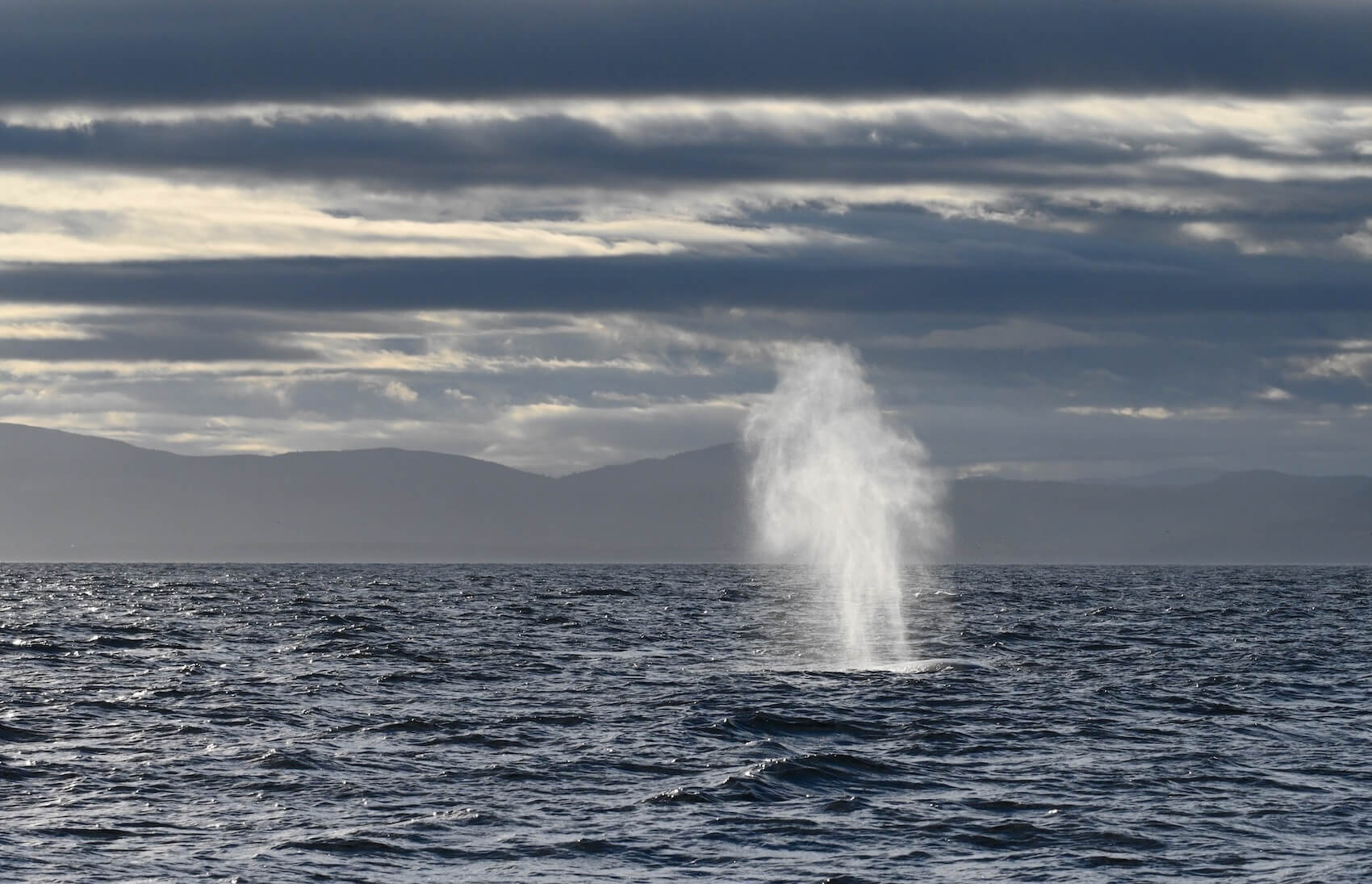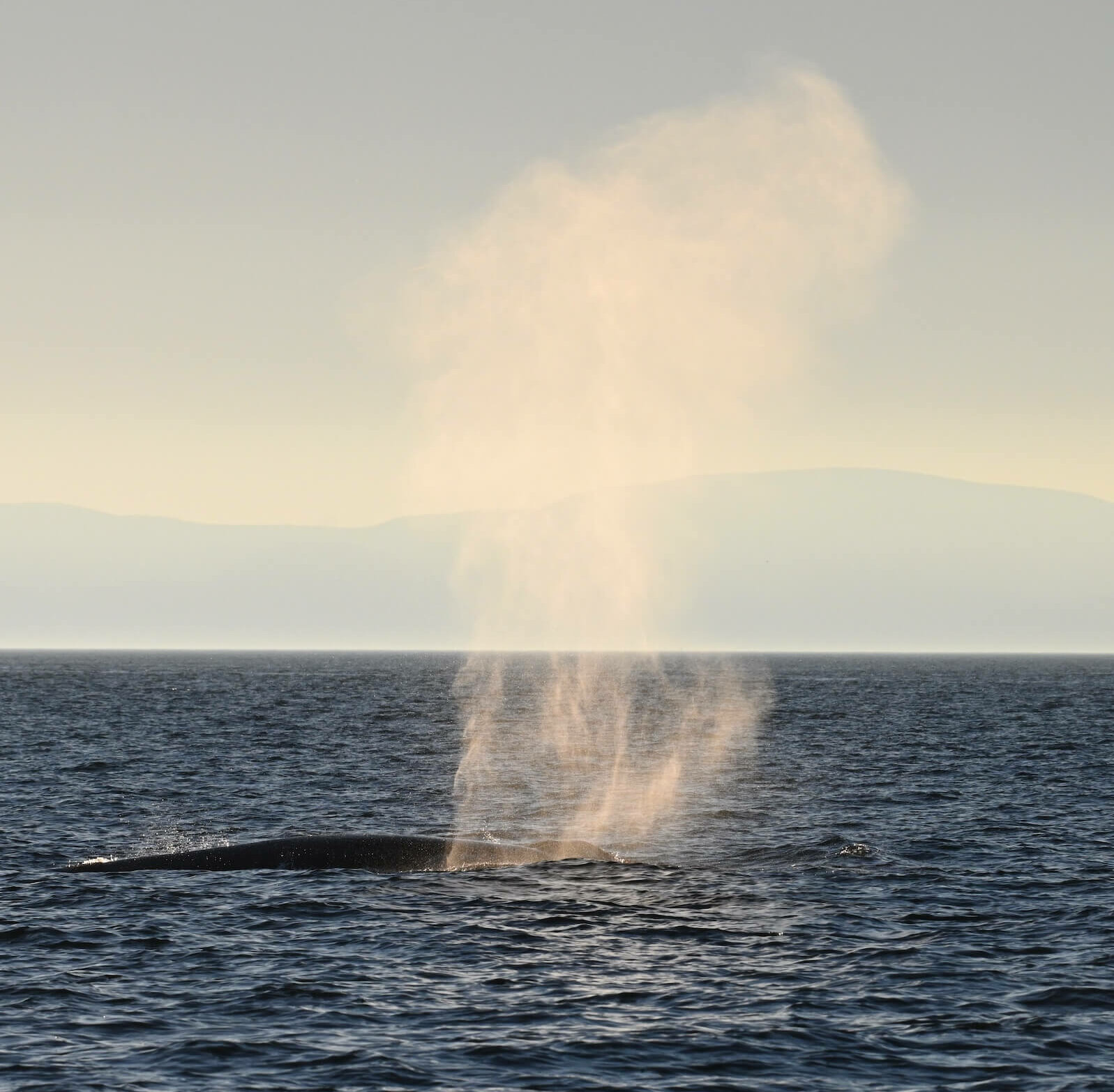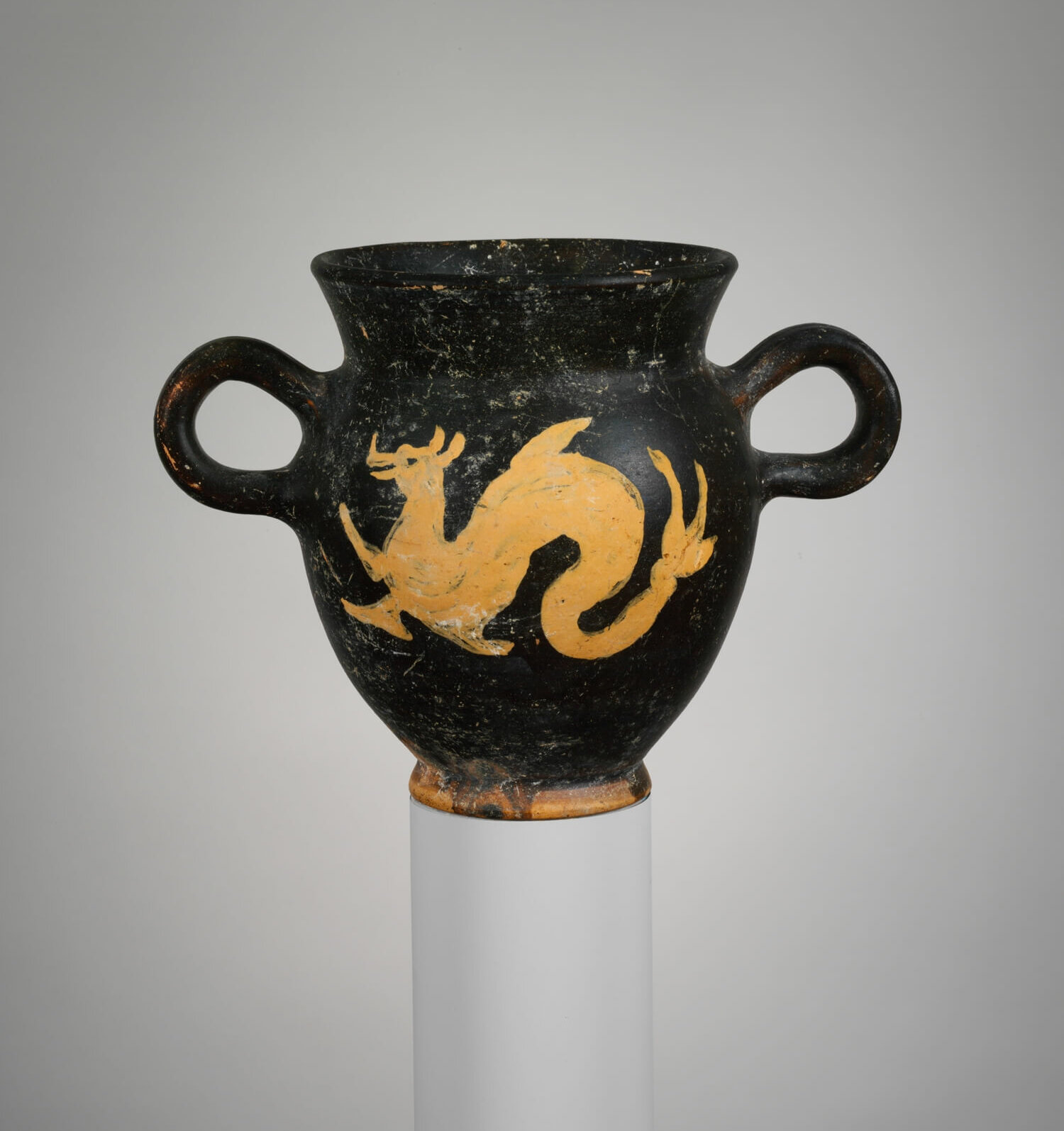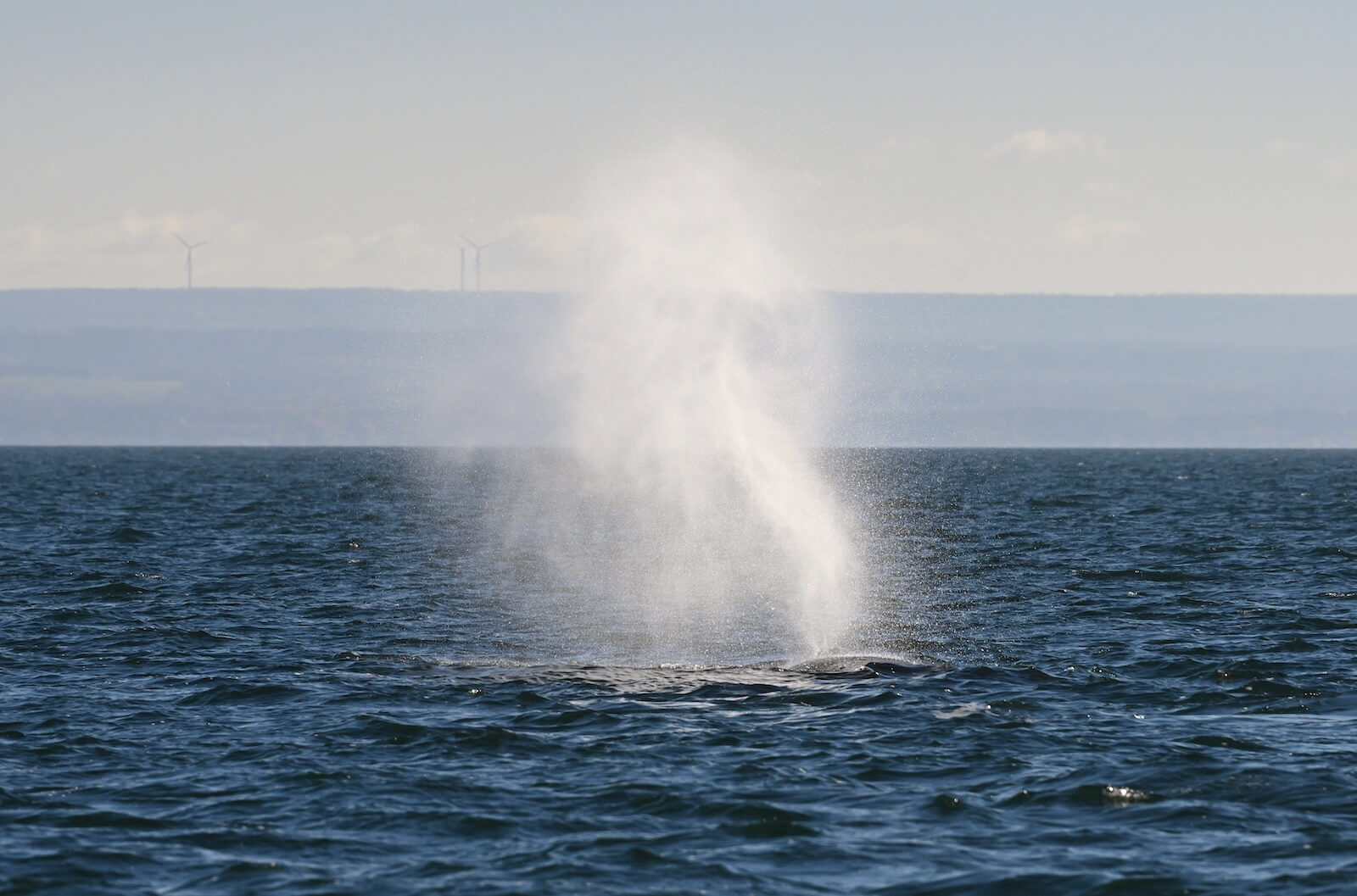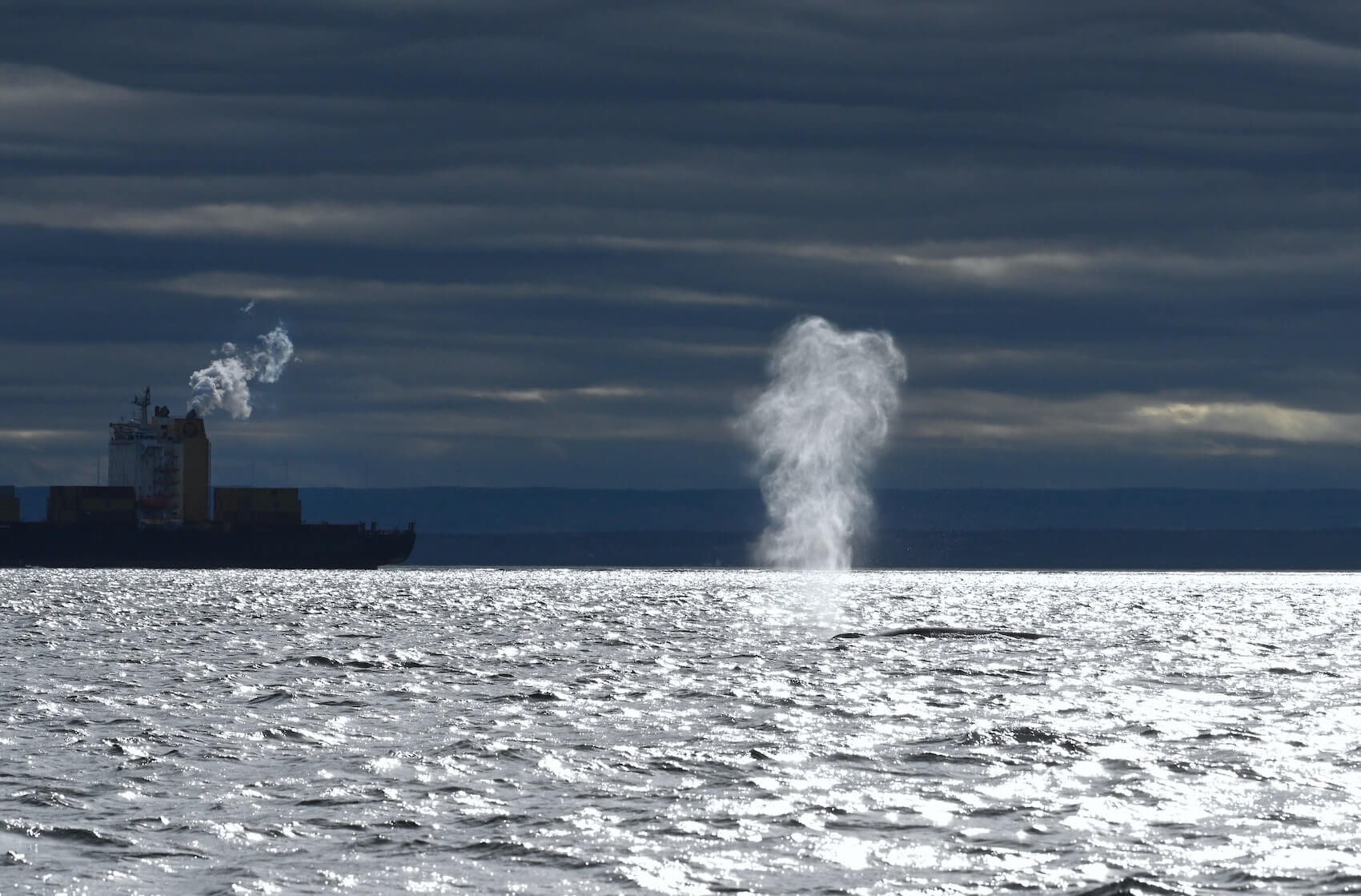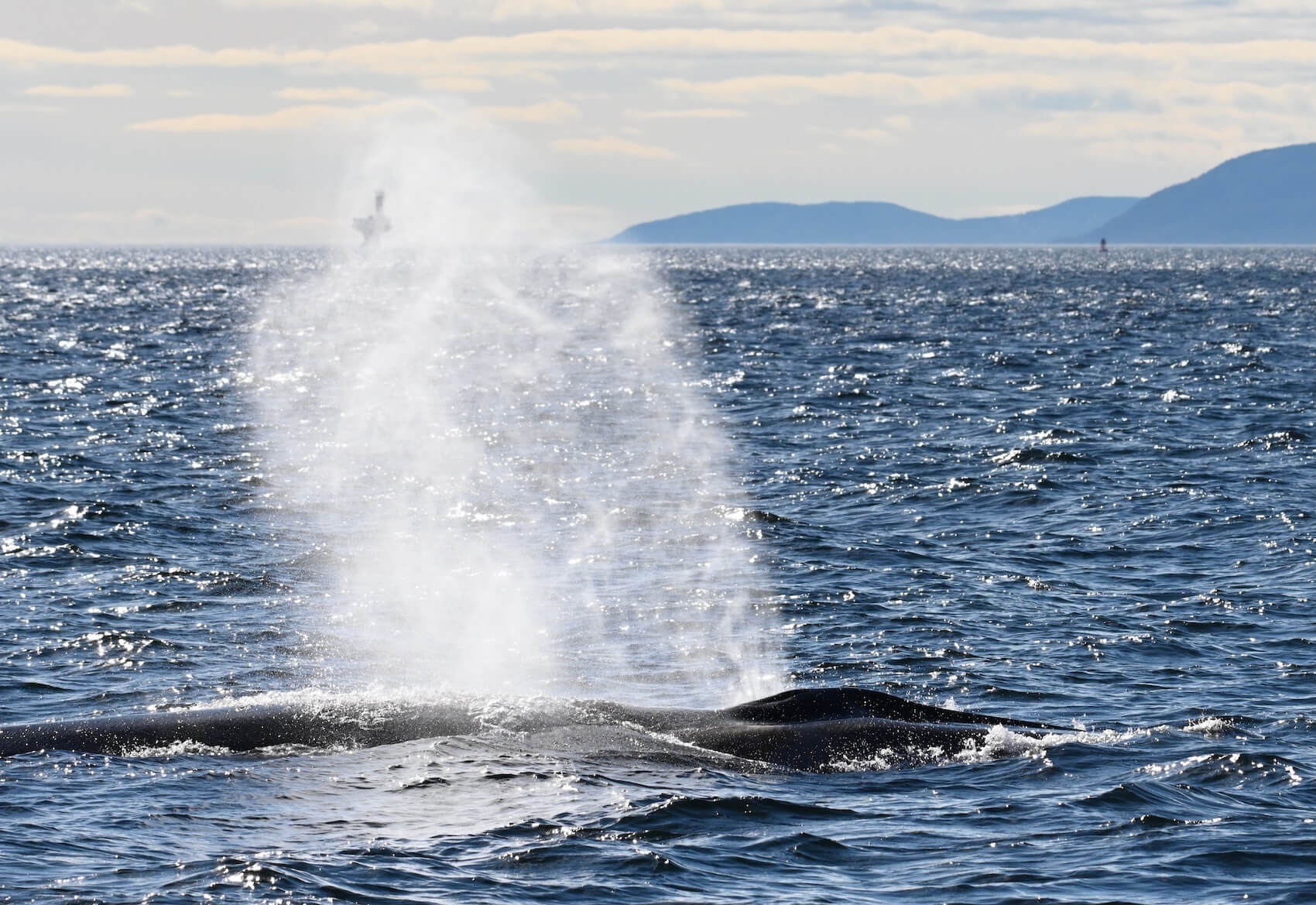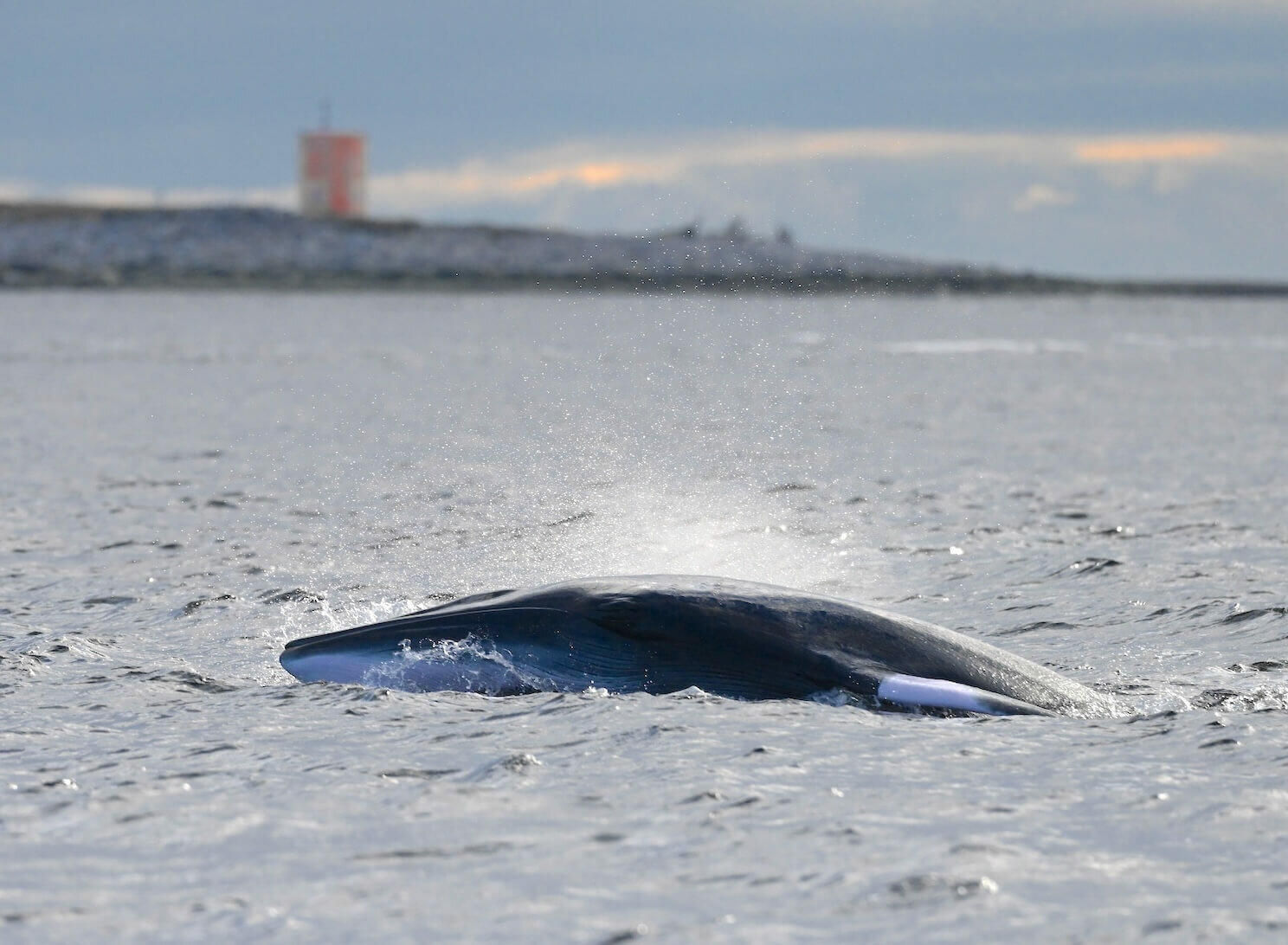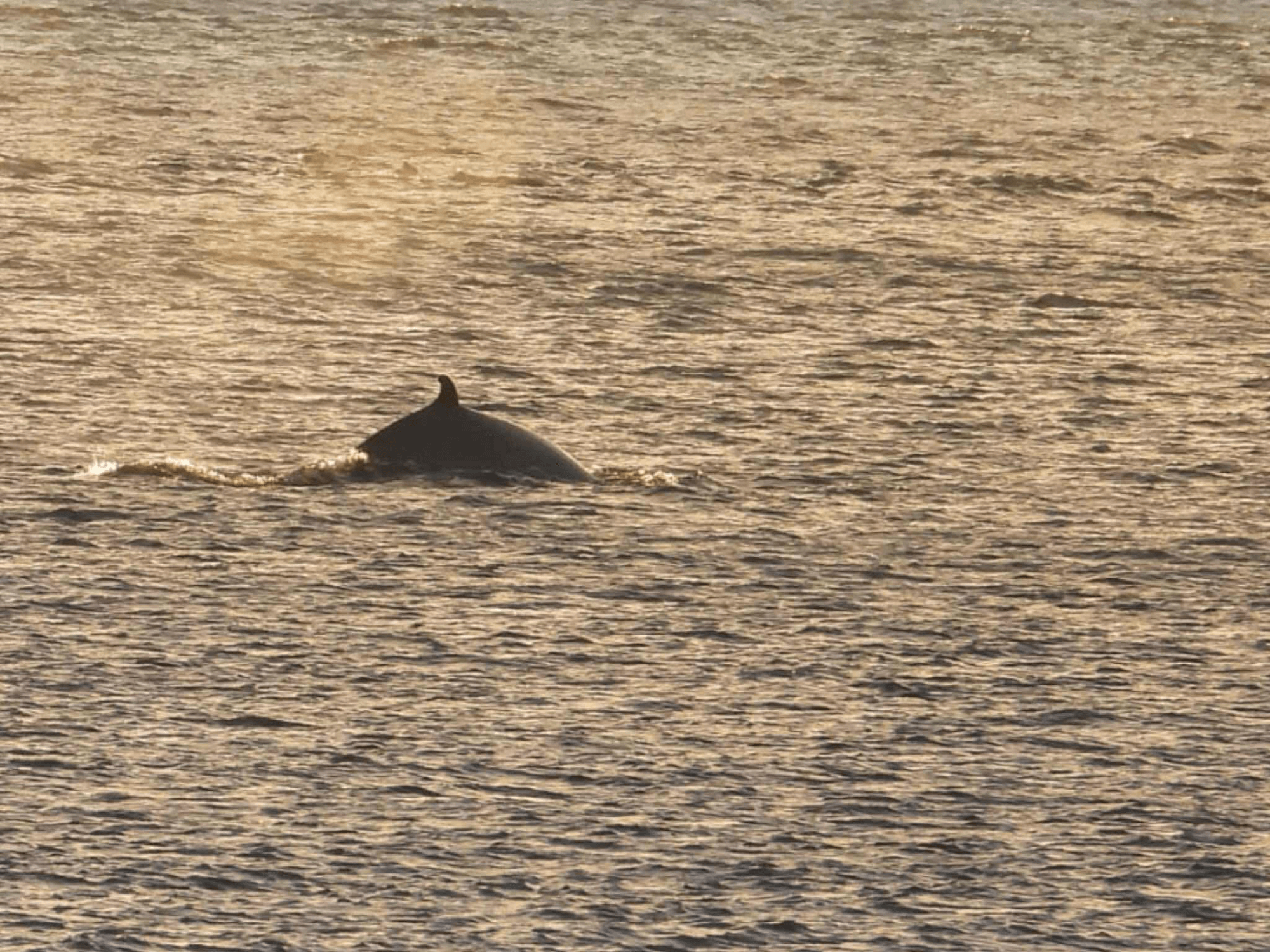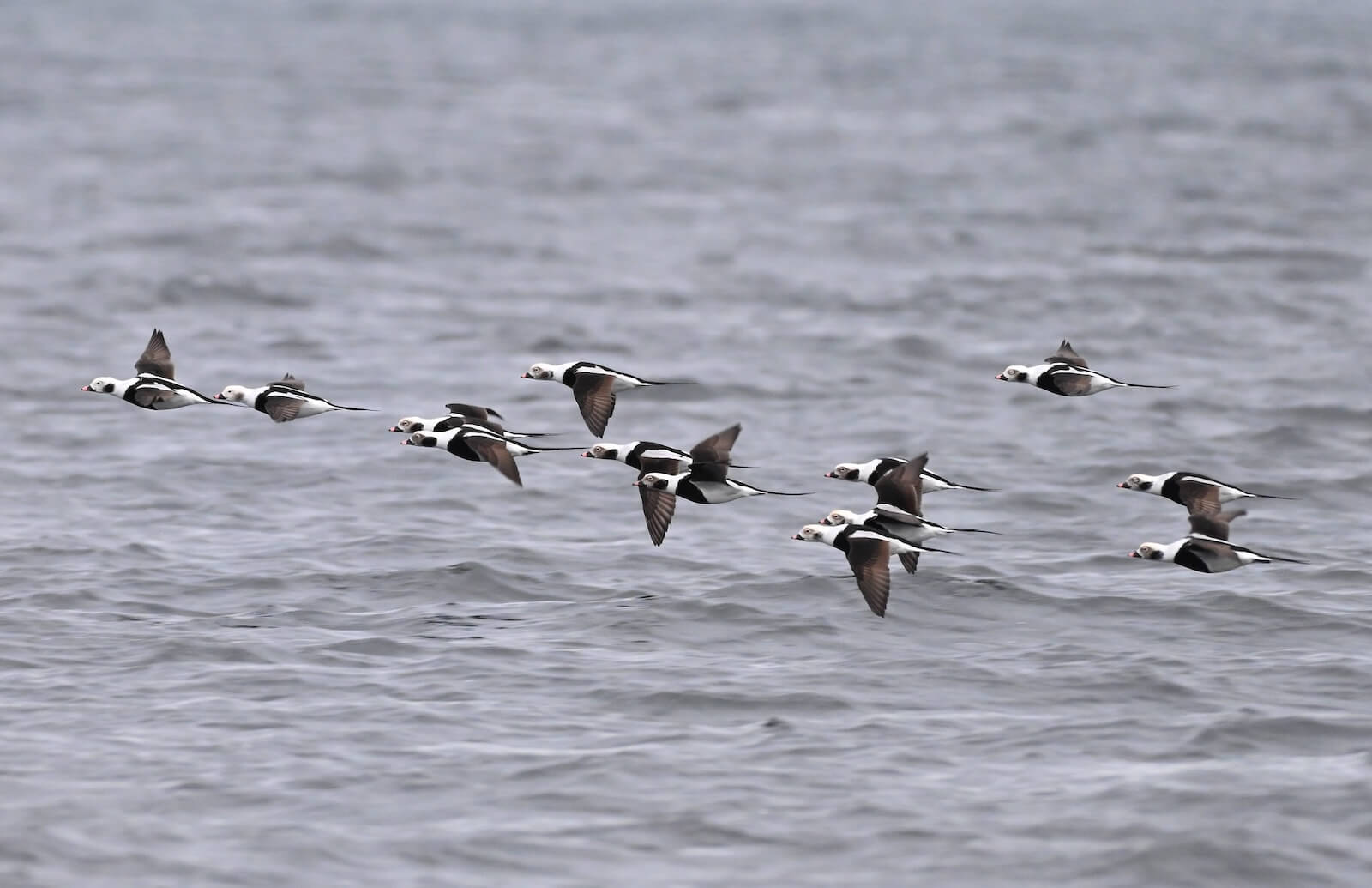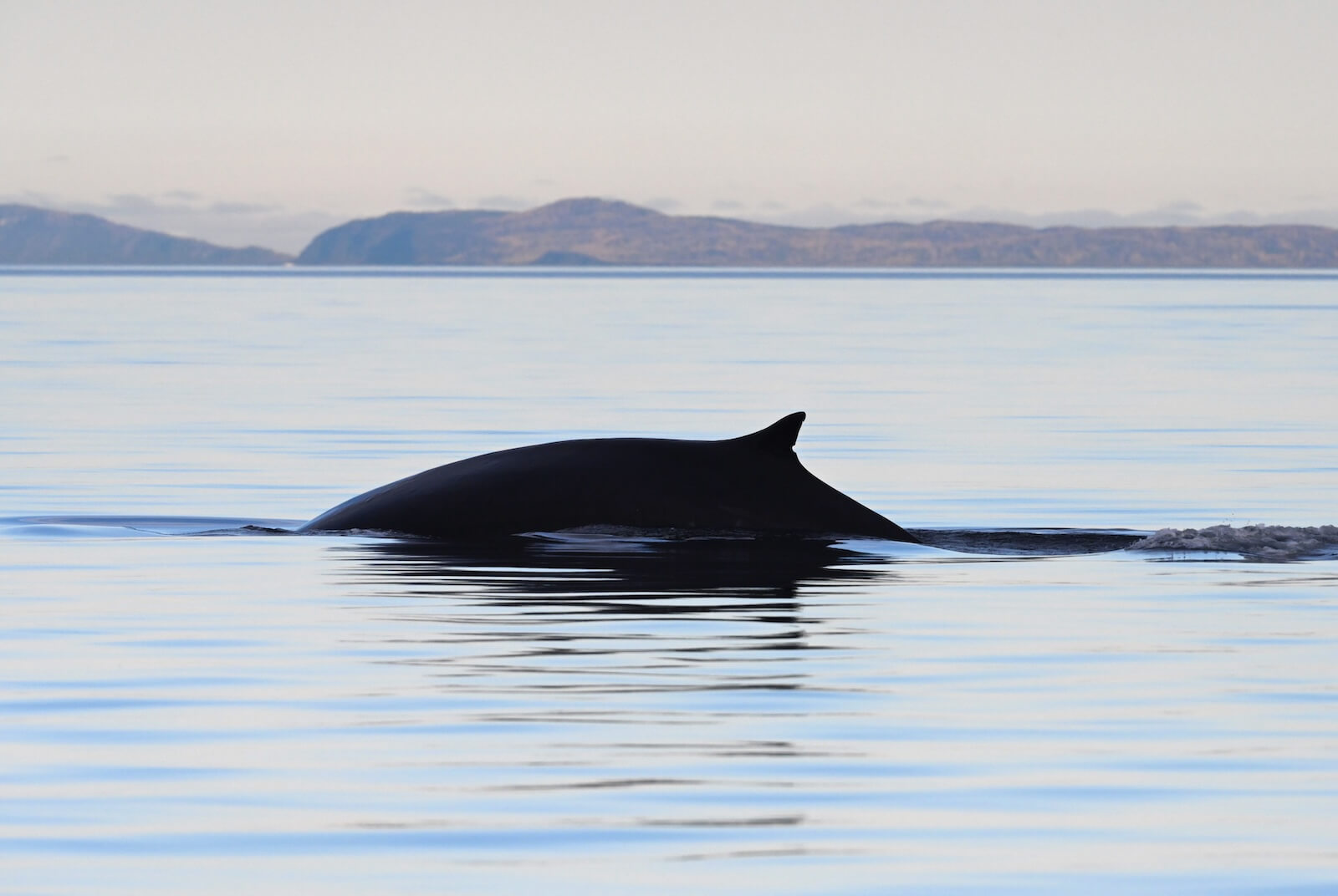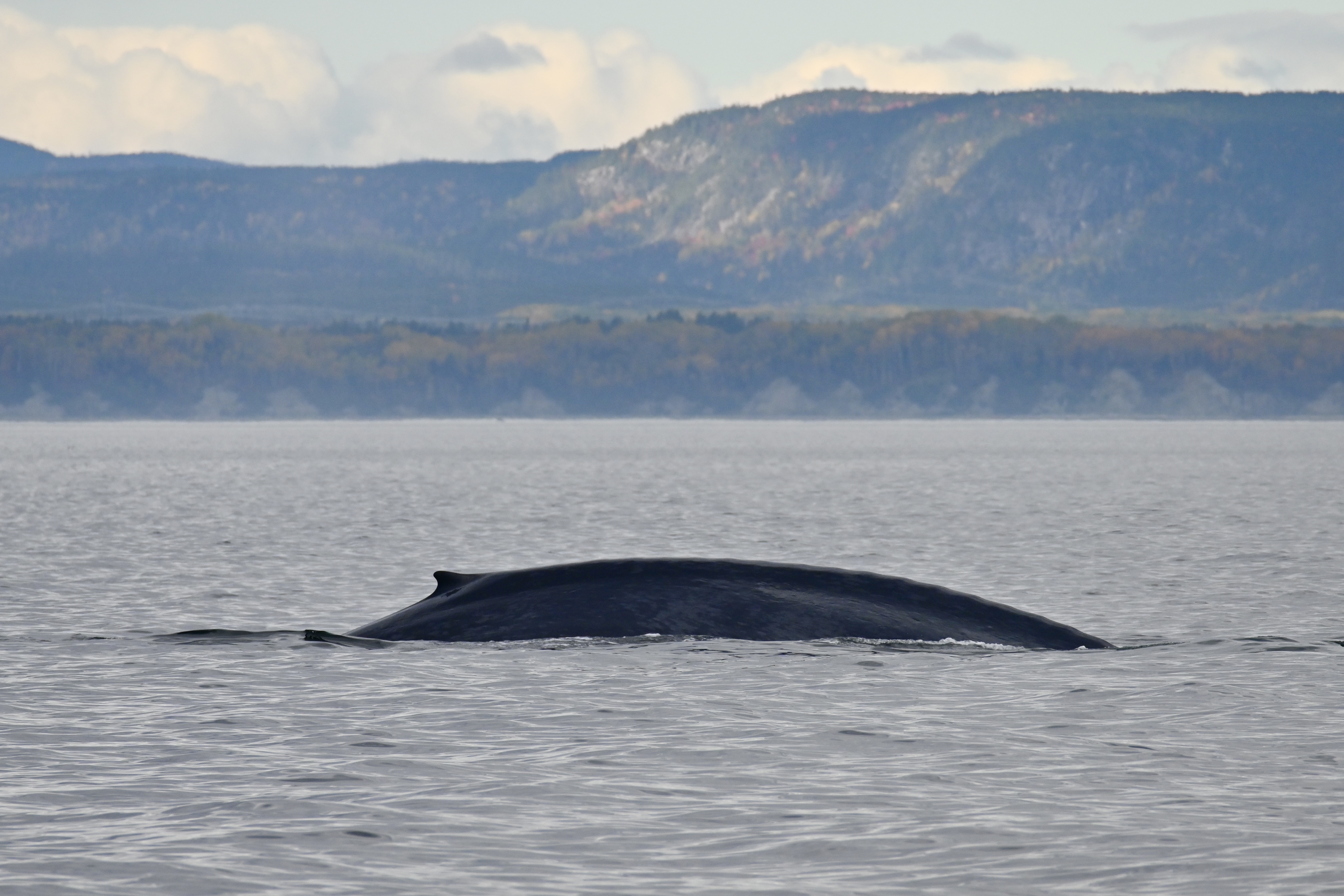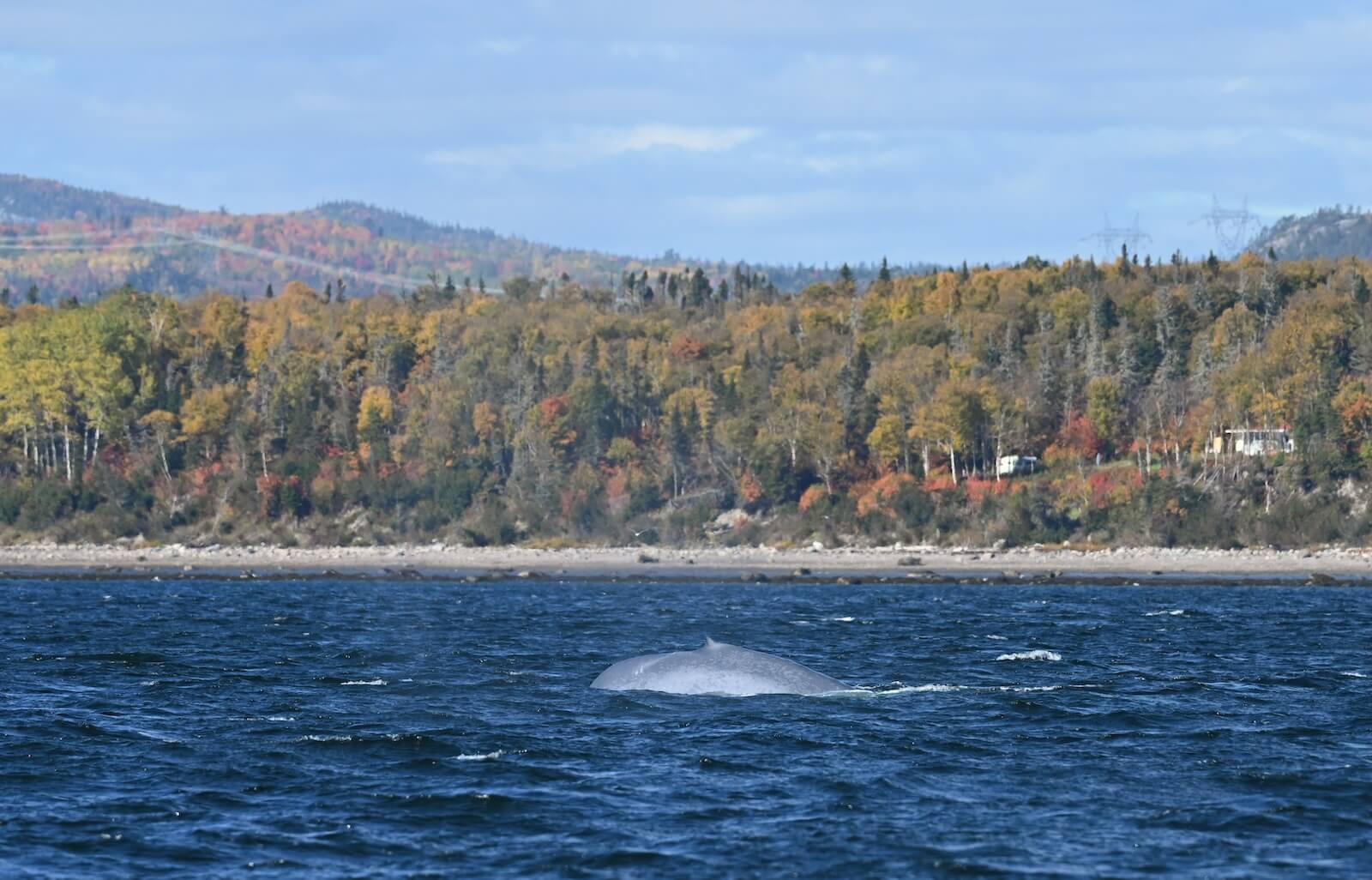The gloomy weather, heavy fog, and trees stripped of their colours remind us that another gorgeous autumn is winding down. Add to that the gigantic carcass of a well-known fin whale, the underwater echoes of belugas, whales that are being mistaken for others, and we can see the St. Lawrence is cloaked in a truly mystical Halloween-esque atmosphere.
Sea monsters
To many, the depths of the ocean are terrifying, and what little we know about them is, to say the least, can be disquieting. This fear stems primarily from a lack of knowledge about the creatures that inhabit our seas. Undoubtedly, ignorance and the unknown have played a role in perpetuating these age-old fears.
Throughout the ages, whales and the mysteries that surround them have always conjured up strong emotions and inspired countless legends and tales. Traces of them can even be found in Greek mythology. The term Cetus comes from the Greek ketos (κῆτος), which translates as “sea monster.” Representations of these monsters can be found in Greek, Etruscan, and Cretan iconography (600-480 BCE) and later, in art of the Roman era.
Whales in the collective imagination
For the Etruscans, the realm of the dead involved a voyage at sea. Marine creatures—real or imagined—were therefore often associated with death. Sea monsters (Cetea in Greek), are positively portrayed as guardians of the dead, or at least as their escorts to the afterlife.
More recently, whalers spent their free time carving scenes of their lives at sea into sperm whale teeth or the bones of other whales. This type of art was called scrimshaw.
Swedish naturalist Carl Linnaeus classified most of the planet’s cetaceans in the 19th century, thereby classing these hitherto mythical animals as mammals. Yet cetaceans still retain an aura of mystery about them. Since 2002, four new species of beaked whales have been described… and there are probably more to come.
If you want to learn more about the role whales play in culture and in our minds, listen to this podcast (in French)!
Blows and simulacra
This past week, fin whales paraded into the Saguenay–St. Lawrence Marine Park with great fanfare. One naturalist and wildlife photographer reports seeing five different belugas between Les Bergeronnes and Tadoussac, including a puzzling one that could not be identified! Their blows mixed with the sea spray, creating an illusion of ghosts hovering above the murky waters.
The ghosts of the St. Lawrence
With their faint blows and shrill cries, belugas continue to haunt the Saguenay Fjord and the shorelines of the St. Lawrence. A Côte-Nord resident spotted three of these white whales gliding through the waters west of Grande Île (opposite Kamouraska) and another group of about ten leaving the Saguenay.
Cetaceans are still visiting the Gaspé Peninsula as well. One local resident reports seeing two fin whales and four humpbacks. In Gaspé Bay, one woman observed both minke and humpback whales: “We could see their backs and tails as well as their spouts offshore, while closer to the coast we could hear minke whales blowing. […] I went back on Sunday and the scene was pretty much the same, only this time it was just minke whales.”
Seals in the gulf
Several harbour seals round out this October scene: “There are always harbour seals squabbling over the rocks in Anse aux Cousins. In the evening when I take my dog out for a walk, I can hear them grunting! Those raucous sounds are very Halloween-like!” Indeed, harbour seals produce all sorts of noises: grunts, barks, and even sounds that are difficult to describe!
In Gallix, near Sept-Îles, one sharp-eyed observer spotted harbour seals near the mouth of the Sainte-Marguerite River: “There were at least six—three closer to the river and three more a little farther out—including one close by that was behaving like a dolphin! In Mingan, a naturalist has been observing harbour seals blending into the rocky landscape, curled up on the rocks, or hiding in the water.
Whales in disguise
In the Baie-Comeau region, one cetacean enthusiast saw a whale in disguise. More precisely, he spotted a large blow that led him to believe that there was a humpback in the area. Ultimately, it turned out to be a minke whale, its blow clearly visible for once thanks to the cooler temperatures. In addition to a herd of harbour porpoises, he identified about ten minke whales between Baie-Comeau and Franquelin that were “popping up everywhere, their backs glistening in the sun.”
These dynamic whales are masters of disguise. They are often mistaken for other species when their tail flukes are thought to resemble the dorsal fins of a killer whale, or their large white bellies look like enormous belugas leaping out of the water!
Giant carcass
Yet, while the myths may be a thing of the past, the waters of the St. Lawrence continue to harbour their share of enigmas. The female fin whale Bp919 was found stranded on the Gaspé coast. A team from the Quebec Marine Mammal Emergency Response Network (QMMERN) travelled to the site to recover the carcass for a necropsy with the hope of shedding some light on the potential cause of death of this animal, which measured over 20 metres long.
In closing, between sea mist, myth, and the glittery spouts of its whales, the St. Lawrence reminds us that marine creatures still inhabit not only our minds and legends, but also the waters of this marine melting pot teeming with life!
To learn more
- Creatures of the Deep. Erich Hoyt.
Where are the whales this week? Observation map
These data were reported by our network of observers. They give an idea of the presence of whales and in no way represent the actual distribution of whales in the St. Lawrence. Just for fun!
Click on the whale or seal icons to discover the species, the number of individuals, additional information or photos of the sighting. To enlarge the map, click on the icon in the top right-hand corner.
The map works well on Chrome and Firefox, but not so well on Safari. To display the list of sightings, click on the icon in the top left-hand corner.
Thanks to all our collaborators!
Special thanks go out to all our observers who share their love for marine mammals with us. Your encounters with cetaceans and pinnipeds are always a pleasure to read and discover.
On the water or from shore, it is your eyes that give life to this column.
- Sylvie Carré
- Marie-Andrée Charlebois
- Alexandre Costa
- Guylaine Côté
- Laeticia Desbordes
- Hélène Guitton
- Jade-Audrey Lavergne
- Mathieu Marzelière
- Diane Ostiguy
- Pascal Pitre
- Renaud Pintiaux
- René Roy
- Christine Stadelmann
- Andréanne Sylvain
- Guy Synnott
- Emmanuelle Taillefer
- Laurence Tremblay
- Marielle Vanasse
- Léa Vanbutsele
And all the others!
Additionally, we would like to acknowledge the following teams that also share their sightings:
Centre d’éducation et de recherche de Sept-Îles (CERSI)
Station de recherche des Îles Mingan (MICS)
Réseau d’observation des mammifères marins (ROMM)
Réseau québécois d’urgence pour les mammifères marins (RQUMM)
Groupe de recherche et d’éducation sur les mammifères marins (GREMM)
Mériscope
Would you also like to share your observations?
Have you seen any marine mammals in the St. Lawrence? Whether it’s a spout offshore or just a couple of seals, drop us a line and send your photos to [email protected]!


